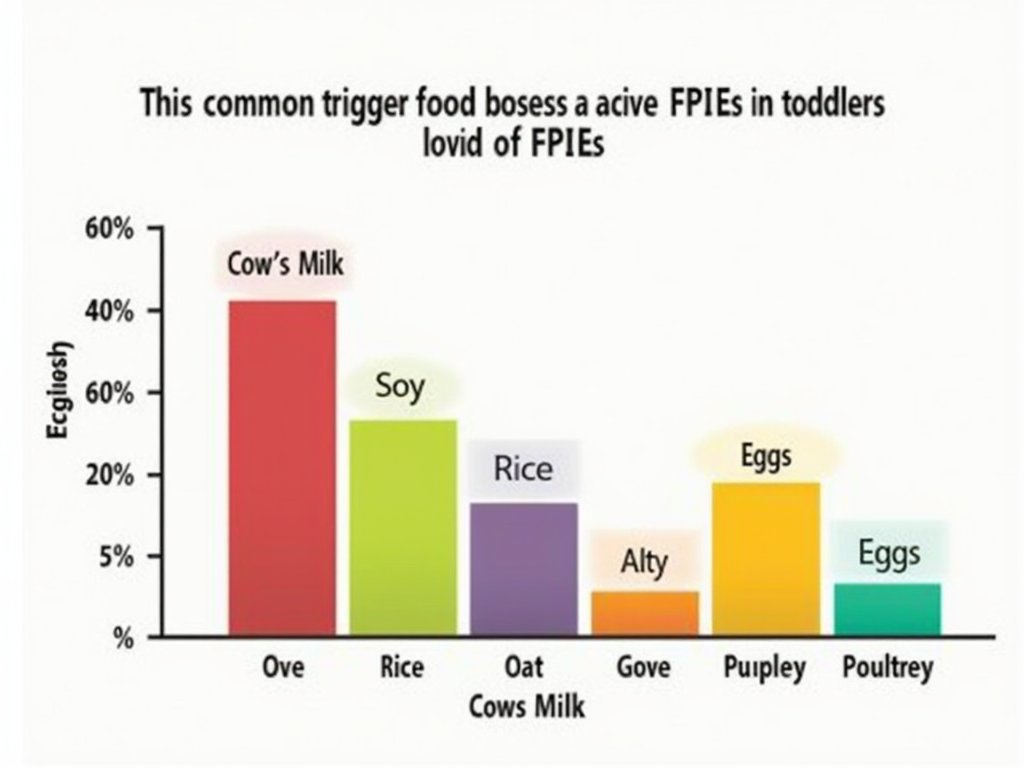Overview
Acute Food Protein-Induced Enterocolitis Syndrome (FPIES) is a rare but serious food allergy that primarily affects toddlers. Unlike typical food allergies, acute FPIES doesn't cause immediate hives or breathing issues. Instead, it leads to severe vomiting and diarrhea, often hours after eating the trigger food. This condition can be frightening for parents, but understanding it can help manage and prevent reactions.

What is Acute FPIES?
Acute FPIES is a type of food allergy where the body's immune system reacts to certain proteins in food, causing inflammation in the gut. This reaction typically occurs 1-4 hours after eating the trigger food and can lead to severe symptoms like:
- Profuse vomiting: Often projectile and repetitive.
- Diarrhea: Can be watery and may contain blood.
- Lethargy: The child may seem unusually tired or weak.
- Pale skin: A sign of dehydration or shock.
Unlike other food allergies, acute FPIES doesn't involve the typical allergic response mediated by IgE antibodies, which is why it doesn't cause immediate symptoms like hives or anaphylaxis. This makes it harder to diagnose and often leads to confusion for parents and even healthcare providers.
Personal Insight: When my daughter was diagnosed with acute FPIES, it was a rollercoaster of emotions. We had no idea what was causing her sudden, severe vomiting episodes. It took several visits to different doctors before we got the right diagnosis. The relief of finally knowing what was wrong was immense, but it was quickly followed by the daunting task of managing her diet.
Common Trigger Foods
Acute FPIES can be triggered by a variety of foods, but some are more common than others. The most frequent culprits include:
- Cow's milk
- Soy
- Rice
- Oats
- Eggs
- Poultry
It's important to note that any food can potentially trigger acute FPIES, and some children may react to multiple foods. For example, my daughter reacted to both rice and oats, which are often considered 'safe' foods for toddlers.

Diagnosis of Acute FPIES
Diagnosing acute FPIES can be challenging because its symptoms mimic other conditions like viral infections or food poisoning. There's no single test for acute FPIES; diagnosis is usually based on:
- Medical history: Detailed accounts of the child's symptoms and food intake.
- Elimination diet: Removing suspected trigger foods and observing if symptoms improve.
- Oral food challenge: Under medical supervision, the child is given the suspected trigger food to confirm the reaction.
For us, the oral food challenge was a nerve-wracking experience. Watching my daughter eat a small amount of rice, knowing it could make her sick, was incredibly stressful. But it was necessary to confirm the diagnosis and start the right treatment.
Treatment and Management
Managing acute FPIES involves strict avoidance of trigger foods. This can be tricky, especially with toddlers who are curious about new foods. Here are some tips that helped us:
- Read labels carefully: Even small amounts of trigger foods can cause a reaction.
- Educate caregivers: Make sure babysitters, grandparents, and daycare staff understand the condition and know what foods to avoid.
- Carry an emergency plan: Have a written plan from your doctor that outlines what to do in case of a reaction.
In some cases, children with acute FPIES may need to see a dietitian to ensure they're getting proper nutrition while avoiding trigger foods. We worked with a dietitian to create a meal plan that was both safe and balanced for my daughter.

Emotional Impact on Families
Living with acute FPIES can be emotionally taxing for families. The fear of accidental exposure and the constant vigilance required can lead to anxiety and stress. It's important for parents to seek support, whether from family, friends, or support groups. Connecting with other parents who have children with acute FPIES can provide valuable insights and emotional relief.
Summary
Acute FPIES in toddlers is a serious but manageable condition. By understanding the symptoms, triggers, and treatment options, parents can help their children lead healthy, happy lives. Remember, you're not alone—there are resources and communities ready to support you on this journey.
Discuss Here